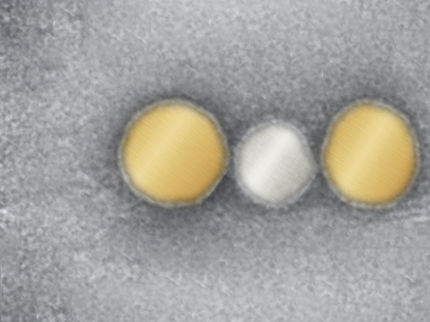How mercury becomes toxic in the environment
Advertisement
Naturally occurring organic matter in water and sediment appears to play a key role in helping microbes convert tiny particles of mercury in the environment into a form that is dangerous to most living creatures.
This finding is important, say Duke University environmental engineers, because it could change the way mercury in the environment is measured and therefore regulated. This particularly harmful form of the element, known as methylmercury, is a potent toxin for nerve cells. When ingested by organisms, it is not excreted and builds up in tissues or organs.
In a series of laboratory experiments, Amrika Deonarine, a graduate student in civil and environmental engineering at Duke's Pratt School of Engineering, found that organic matter and chemical compounds containing sulfur – known as sulfides -- can readily bind to form mercury sulfide nanoparticles. Since they are more soluble than larger particles, these nanoparticles may be the precursors to a process known as methylation.
"When the organic material combines with the mercury, it prevents the particle from accumulating with other mercury particles and growing larger," said Deonarine, who presented the results of her analysis at the summer annual scientific sessions of the American Chemical Society (ACS) in Washington, D.C.
"Since the mercury remains in a nanoparticle size, it can easily collect on the surface of microbes where any mercury that dissolves can be taken in by the microbes," Deonarine said. "Without the organic matter, the mercury sulfide nanoparticles would grow too large and become insoluble, thus reducing the availability of mercury for microbial methylation."
It is while inside the microbe that the mercury is converted into the harmful methylmercury form, the researchers said.
These reactions can only take place in cold water environments with little to no oxygen, such as the zone of sediment just below the bottom of a body of water. Other such anaerobic environments can also be found in waste water and sewage treatment systems, the researchers said.
"The exposure rate of mercury in the U.S. is quite high," said Heileen Hsu-Kim, Duke assistant professor of civil and environmental engineering and senior member of the research team. "A recent epidemiological survey found that up 8 percent of women had mercury levels higher than national guidelines. Since humans are on top of the food chain, any mercury in our food accumulates in our body."
Because fish and shellfish have a natural tendency to store methylmercury in their organs, they are the leading source of mercury ingestion for humans. Mercury is extremely toxic and can lead to kidney dysfunctions, neurological disorders and even death. In particular, fetuses exposed to methylmercury can suffer from these same disorders as well as impaired learning abilities.
There are many ways mercury gets into the environment, with the primary sources being the combustion of coal, the refining of such metals as gold and other non-ferrous metals, and in the gases released during volcanic eruptions. The air-borne mercury from these sources eventually lands on lakes or ponds and can remain in the water or sediments.
"These initial laboratory findings could have far-reaching implications," Hsu-Kim said. "That these reactions can take places in anaerobic environments suggests that the old paradigm of testing for toxic metals in sediments may provide an incomplete picture of how much methylmercury is there."
The researchers plan to continue their studies with other types of organic matter and for longer periods of time.
































































